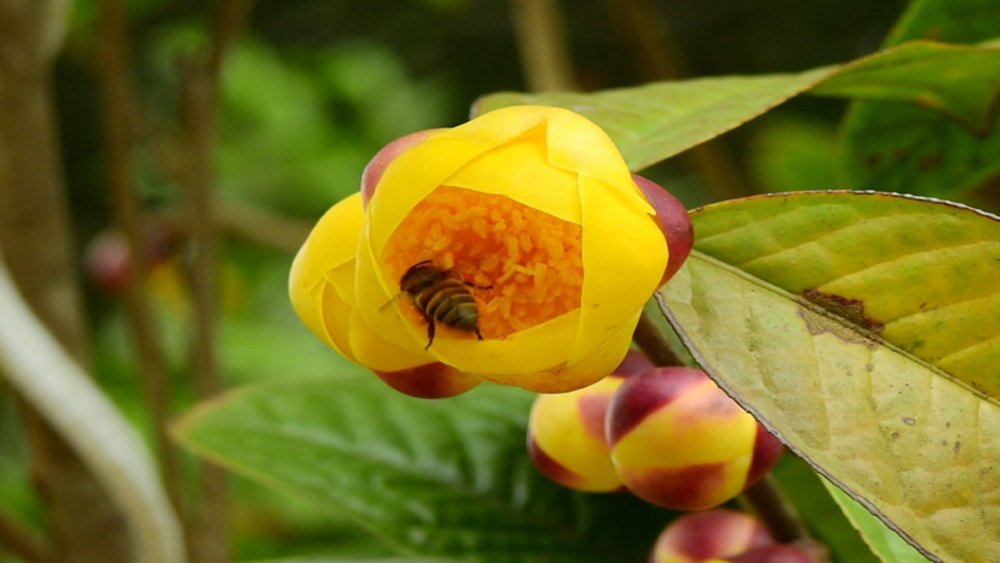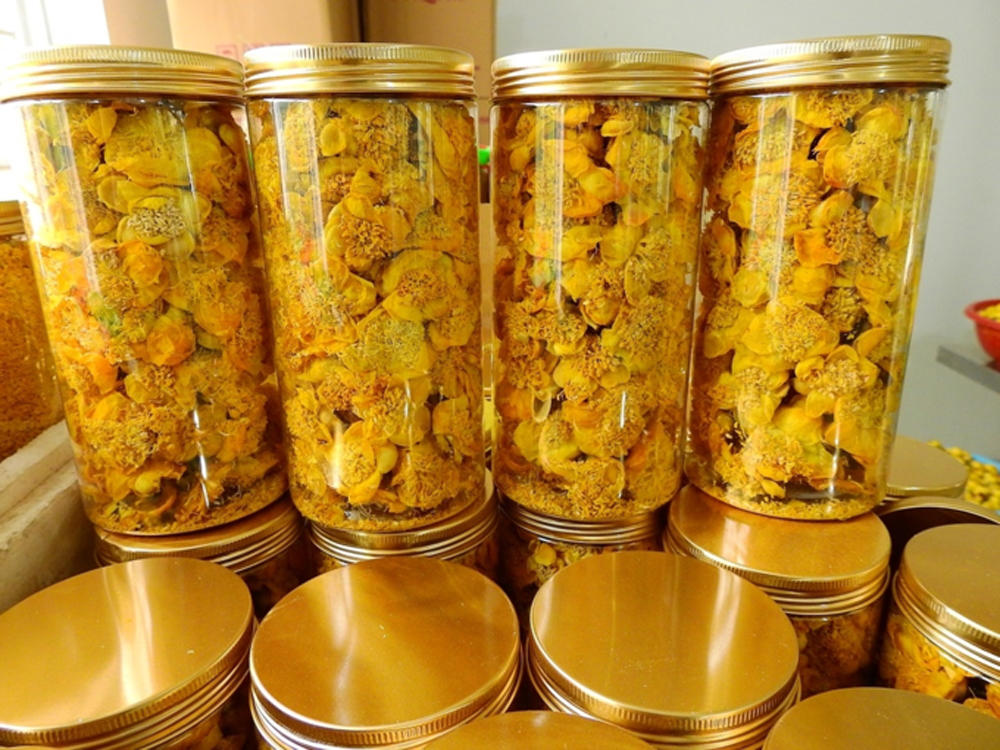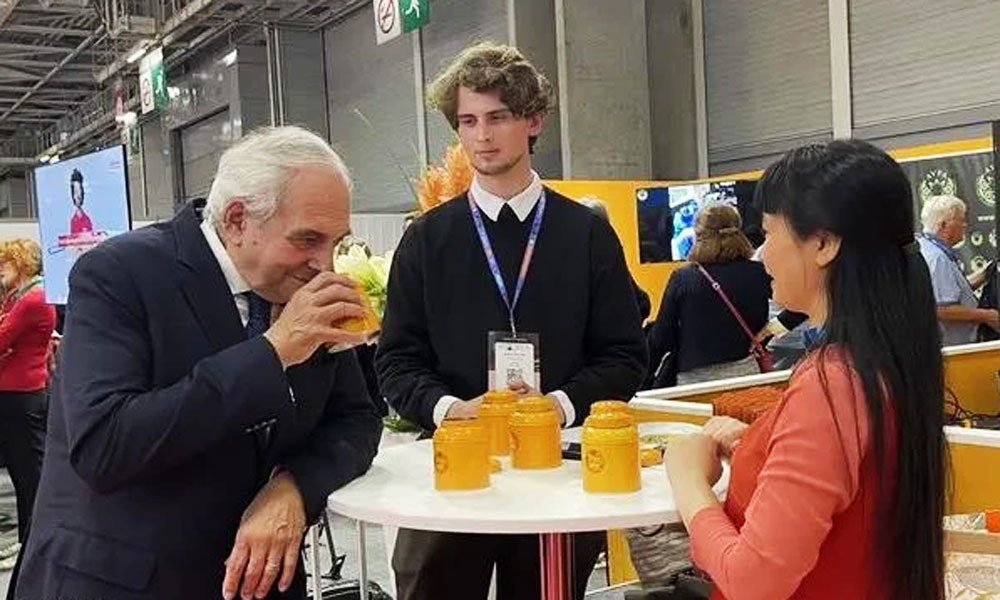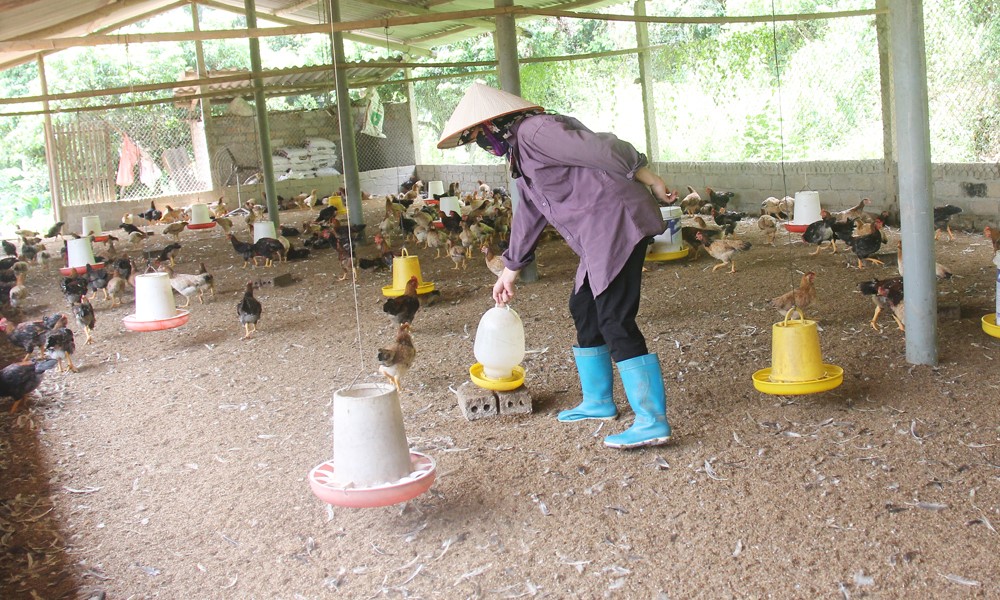Where a flower is worth its weight in gold
When Tet, the Lunar New Year Festival, is around the corner Nam Van Trang's family in Trai Thanh Commune, Ba Che District, Quang Ninh Province, 95 miles east of Hanoi, harvest golden camellia.
 |
|
Golden camellia |
People began to grow the flower in Ba Che District in 2006 when Chinese traders came and paid good money for it. Thang's family began in 2009 on its hill farm. It has more than 10,000 trees on an area of three hectares.
Golden camellia flowers usually bud in the sixth lunar month. The harvest begins at the end of the 10th lunar month and goes on through the lunar year.
But since it is a wild plant, farmers have yet to find a way to intervene and improve yields. If the seed is good, it takes two years for the first flowers to appear, but most trees don't blossom until they are four years old.
The process of growing golden camellia is divided into organic fertilization, harvest
 |
|
Golden camellia has a transparent waxy appearance and large buds and petals. Its stigma is dark yellow while the calyx is red. |
Golden camellia has a transparent waxy appearance and large buds and petals. Its stigma is dark yellow while the calyx is red.
The flower is sought after by wealthy people in Hanoi and Hai Phong City for its perceived benefits for people with hypertension, heart problems, diabetes, and other ailments.
Farmers harvest the flowers just before they bloom to prevent bees from sucking up the nectar. After being collected, the flowers are carefully sorted to pick the best ones for drying.
The flowers are separated from one another before drying. A kilogram of dried golden camellia fetches VND15 million ($650) in the market.
 |
|
The flowers are packed and then labeled. |
The fresh flowers are dried for about 15 hours. A kilogram of dried flowers needs six kilograms of fresh flowers. Workers use chopsticks to pick the flowers and pack them gently in plastic boxes to avoid breaking them.
The flowers are packed and then labeled. The area under golden camellia in Ba Che District is around 140 ha, of which nearly 70 ha have been harvested already.
According to the Global Trees Campaign organization, the yellow camellia is at risk due to habitat loss and human collection of seedlings.
Source: VnExpress
 Bắc giang
Bắc giang















Reader's comments (0)